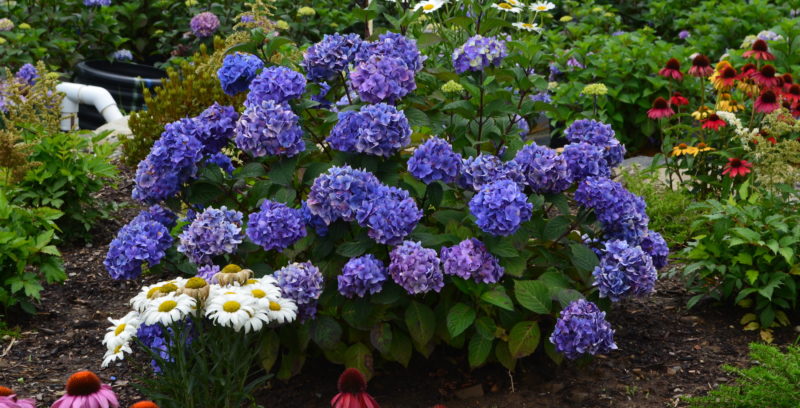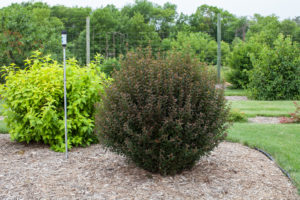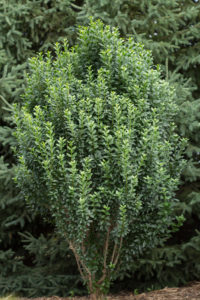
Ornamental Shrubs: Beyond the Hype
As I was paging through one of the latest consumer gardening magazines, I was struck by some common themes in terms of what I saw. Most of the spreads featured beautiful, compelling photos of lush gardens (as one would expect). As I continued browsing, I was also struck by consistent keywords that we all use when inspiring people to stop and pay attention to our plants: best, new, better, color, easy, natives, everyday, inspiration, simple … the list goes on!
Our industry has seen a tremendous boom when it comes to the availability of improved genetics. This is especially true in woody shrub ornamentals. Much has been written about the growth of consumer brands that have pioneered the way for consumers to recognize what plants are usually the best performers for long-term success. With continued growth in the sales of branded plants, it is becoming more and more difficult to discern which plants are really standouts. It’s not a bad problem to have, mind you, as generally speaking the genetics continue to get better and better!
It used to be that new plants were the driving force behind most sales strategies, and while new plants are still critical to the process, meeting consumers’ everyday needs has risen to the top. All of those keywords I mentioned at the beginning of this article are designed to reach that core need that consumers want the most — to be successful and enjoy a beautiful environment that they created with our products.
This success transcends the garden. As yards continue to shrink and focus on urban revitalization grows, different uses for plants — especially shrubs — continue to evolve. Using shrubs in decorative containers on the patio has changed the idea beyond annuals that used to corner the combination container market. Breeders understand that breeding attributes for compactness, longer bloom periods, and unique foliage give growers, retailers and, most importantly, consumers flexibility in how they consume our products.
That said, here are five ornamental shrubs that meet these criteria and
deserve to be considered for any landscape, garden or patio:
REBLOOMING HYDRANGEA
When Endless Summer launched in 2004 with the first Hydrangea macrophylla to  bloom reliably on both old and new wood (which no consumers comprehend, by the way) the marketplace was in a perfect storm. Brands were new, and retailers sold Endless Summer at levels they had never seen for a new shrub introduction. As popularity for the brand grows, Bailey Nurseries continues to push hard to ensure that even better genetics are being introduced by the brand.
bloom reliably on both old and new wood (which no consumers comprehend, by the way) the marketplace was in a perfect storm. Brands were new, and retailers sold Endless Summer at levels they had never seen for a new shrub introduction. As popularity for the brand grows, Bailey Nurseries continues to push hard to ensure that even better genetics are being introduced by the brand.
Thus, enter ‘BloomStruck’ with its prolific blooms and intense color, combined with exceptional cold tolerance and heat resistance. In the garden or on the patio, ‘BloomStruck’ is bred for both beauty and garden performance.
It is hardy to Zones 4 through 9. It reaches 3 to 4 feet tall and 4 to 5 feet wide, and prefers full sun to part shade.
DISEASE-RESISTANT TEXTURE
‘Little Devil’ has been around for some time now and for good reason. Its  compact, yet upright, rounded habit and fine textured foliage sets it apart from other ninebark. It requires little to no pruning and is free from most pest and disease issues, especially mildew, which plagues many other ninebark.
compact, yet upright, rounded habit and fine textured foliage sets it apart from other ninebark. It requires little to no pruning and is free from most pest and disease issues, especially mildew, which plagues many other ninebark.
Its high adaptability to wet and dry soils make it an excellent substitute for barberry in areas where barberry may be invasive, and its compact habit makes a wonderful, clean, architectural-style container.
‘Little Devil’ is hardy to Zones 3 through 7. It reaches 3 to 4 feet tall and wide, and prefers full sun.
COMPACT FRINGE FLOWER
A staple in the south, ‘Crimson Fire’ is the first truly compact red-leaf loropetalum on the market with proven cold tolerance. When other red-leaf loropetalum were severely damaged in the winter of 2013-14, ‘Crimson Fire’ came through unscathed. Additionally, this well-behaved selection has controlled growth an d doesn’t throw out rangy shoots.
d doesn’t throw out rangy shoots.
Its lovely evergreen foliage, combined with bright pink flowers in spring make it desirable for use in mass plantings or in combination containers.
‘Crimson Fire’ is hardy to Zones 7 through 9. It reaches 4 feet tall and spreads 4 to 5 feet, and it prefers full sun to part shade.
VERTICAL ACCENTS
The demand for upright alternatives to arborvitae, especially in Midwestern  states, has been needed for a long time. Finally, enter ‘Straight Talk’. Its narrow, tightly upright habit make it the perfect vertical accent or screen. Super easy to grow and cold hardy too!
states, has been needed for a long time. Finally, enter ‘Straight Talk’. Its narrow, tightly upright habit make it the perfect vertical accent or screen. Super easy to grow and cold hardy too!
‘Straight Talk’ handles a wide variety of soils and has a clean look that architects crave in design. It can also be sheared into a short hedge. Perfectly suited for urban conditions this variety is here to stay for a long time.
‘Straight Talk’ is hardy to Zones 4 through 8. It reaches 12 feet tall and 2 feet wide, and prefers full sun to part shade.
LOW-MAINTENANCE COLOR
Dispelling the notion that roses are only red and violets are blue, ‘Coral Cove’ is rising to the top as one of the more unique shrub roses in the market today. It’s incredible orange-pink color and petite size make this gorgeous, ever-blooming shrub rose impossible to ignore.
impossible to ignore.
The small, perfectly rounded form makes an outstanding informal hedge along a walkway or garden path and makes a colorful decorative container pop!
‘Coral Cove’ is highly disease resistant and hardy to Zones 4 through 9. It reaches 2 to 3.5 feet tall and wide, and prefers full sun.


 Video Library
Video Library 




















